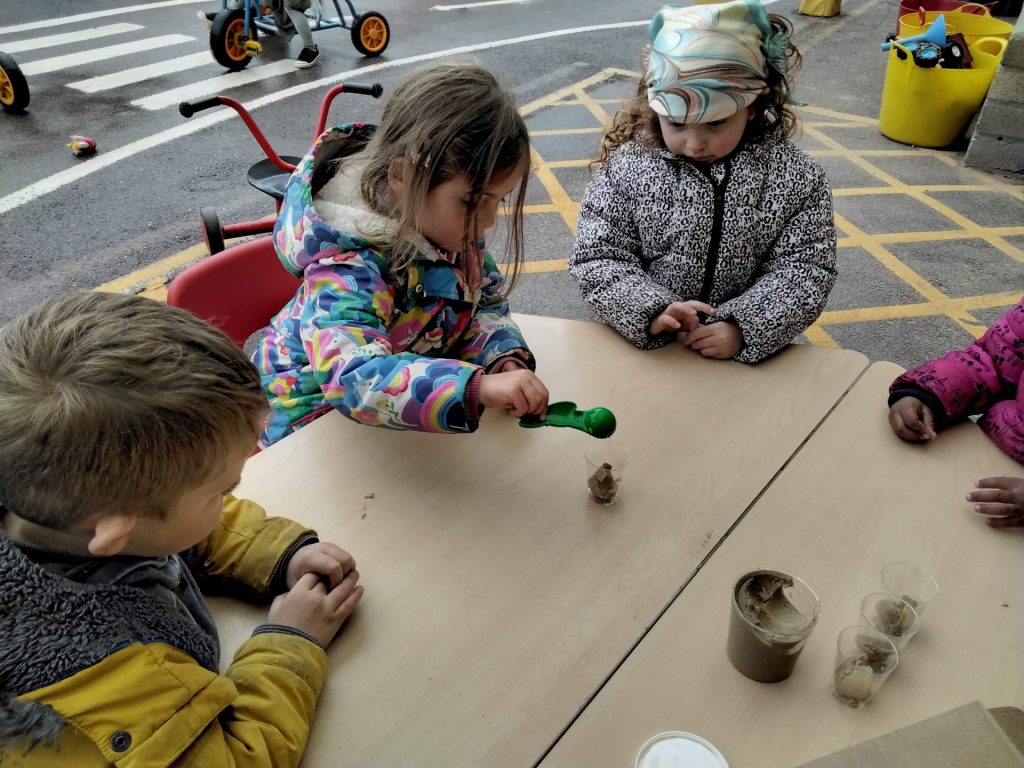
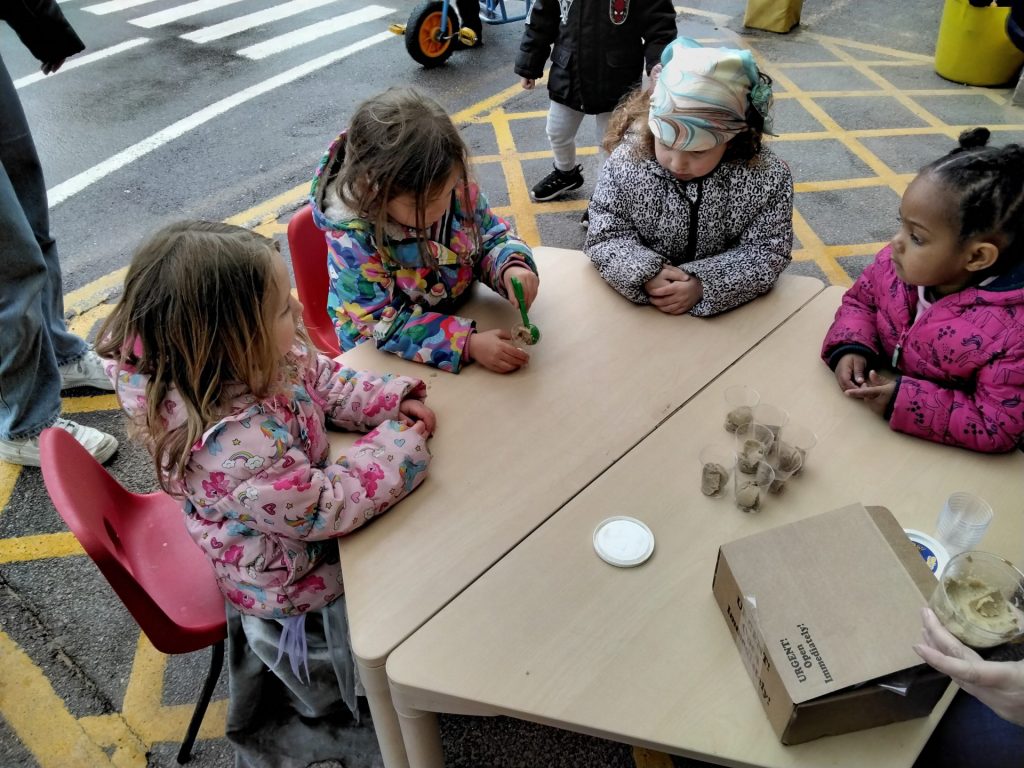
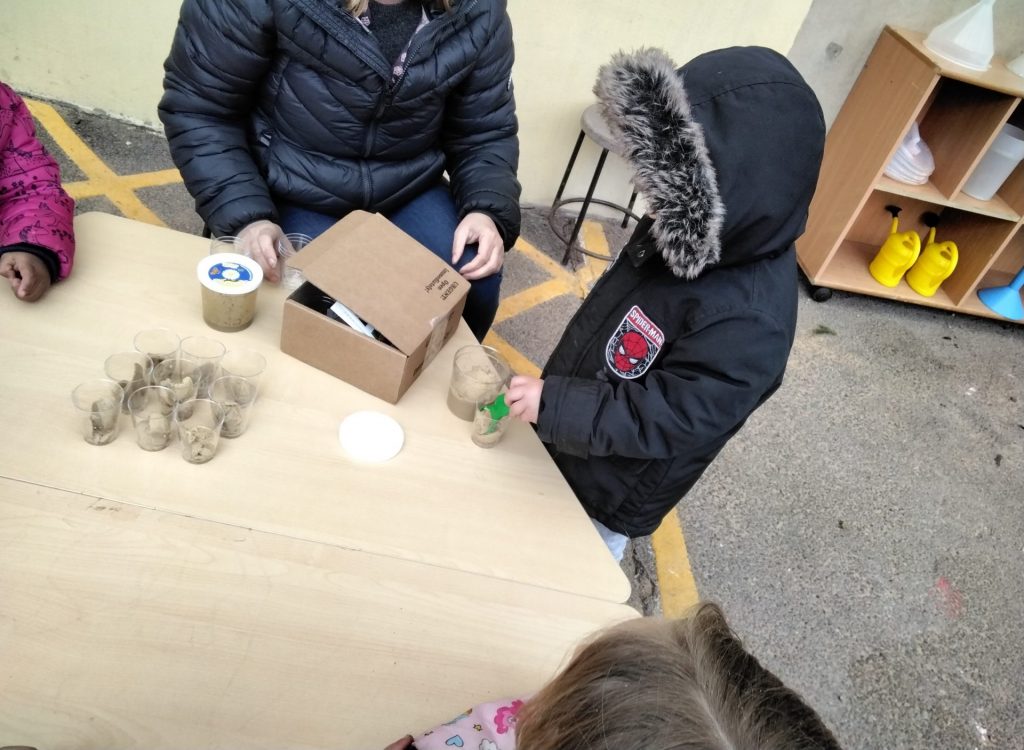
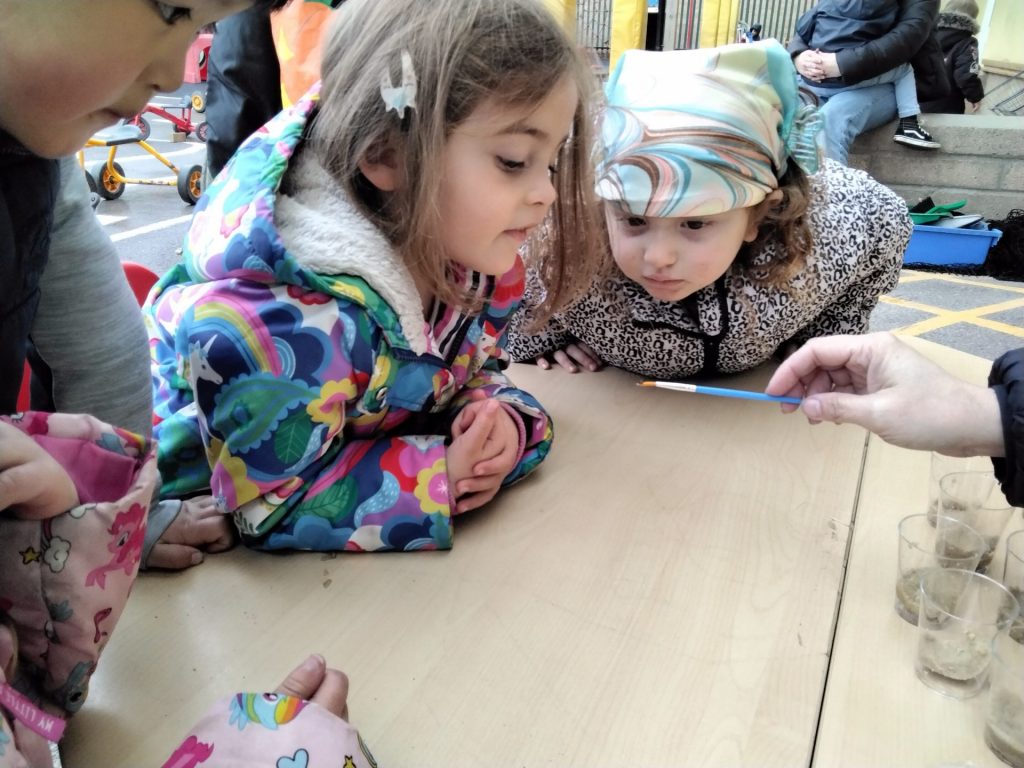
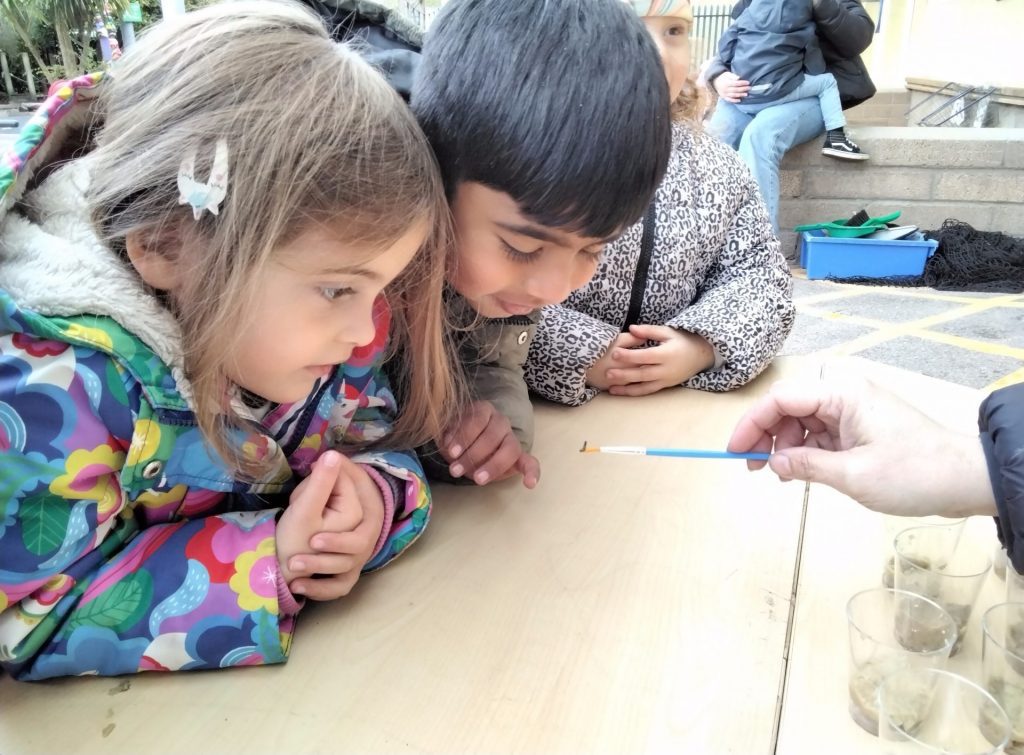
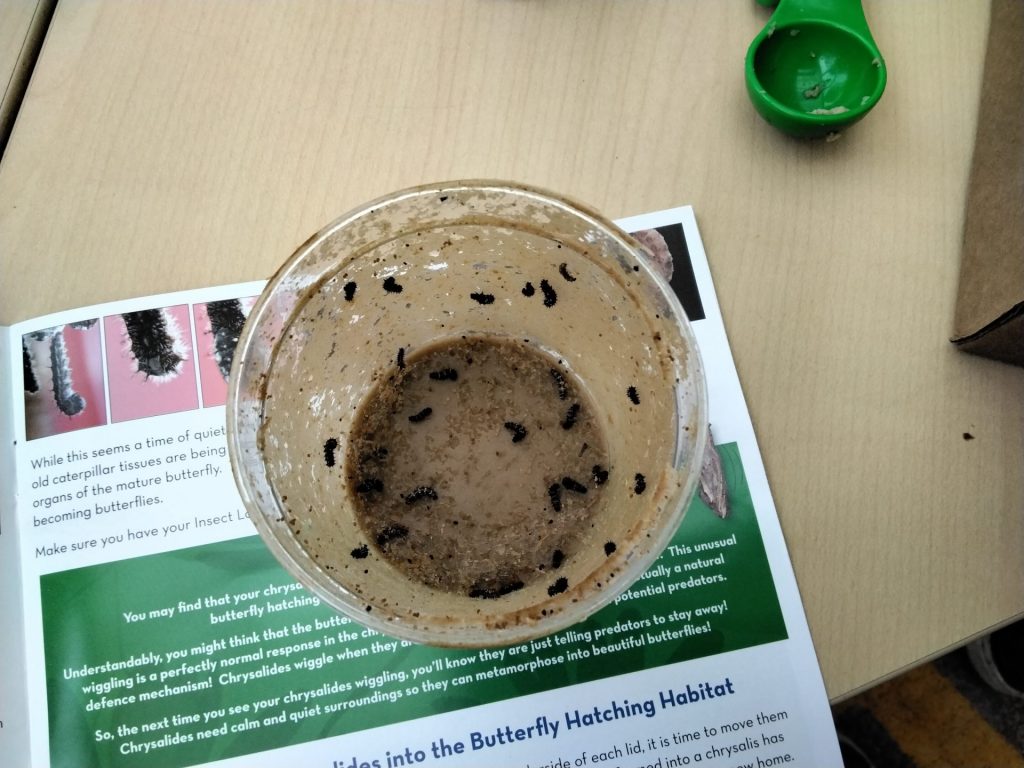
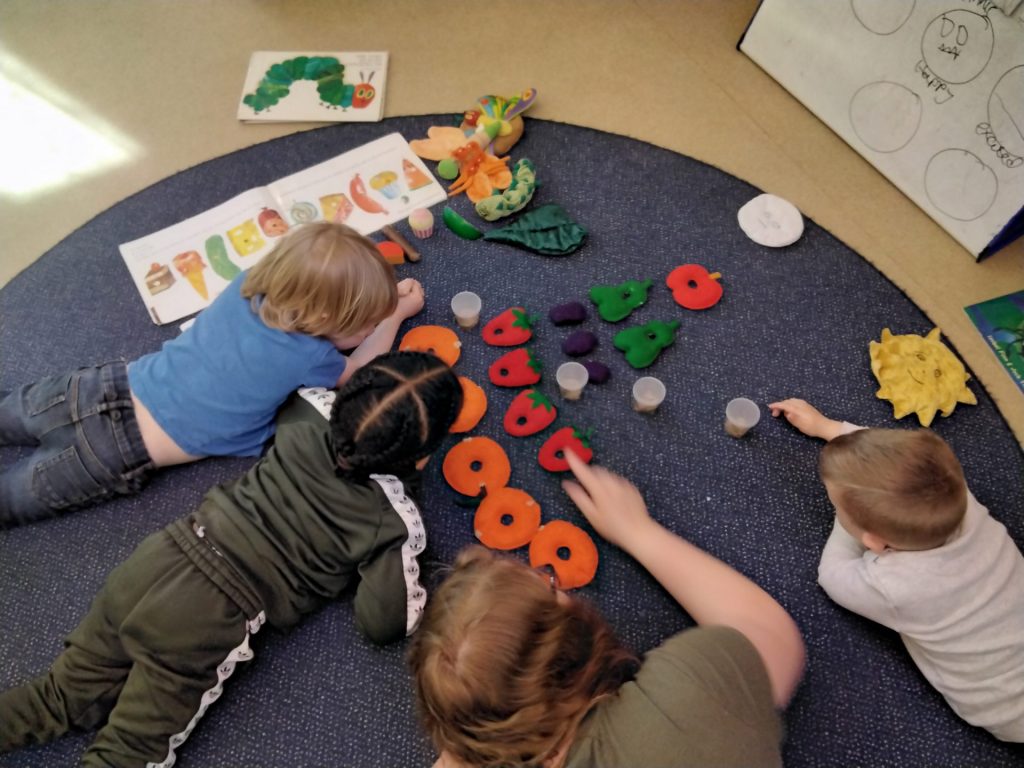
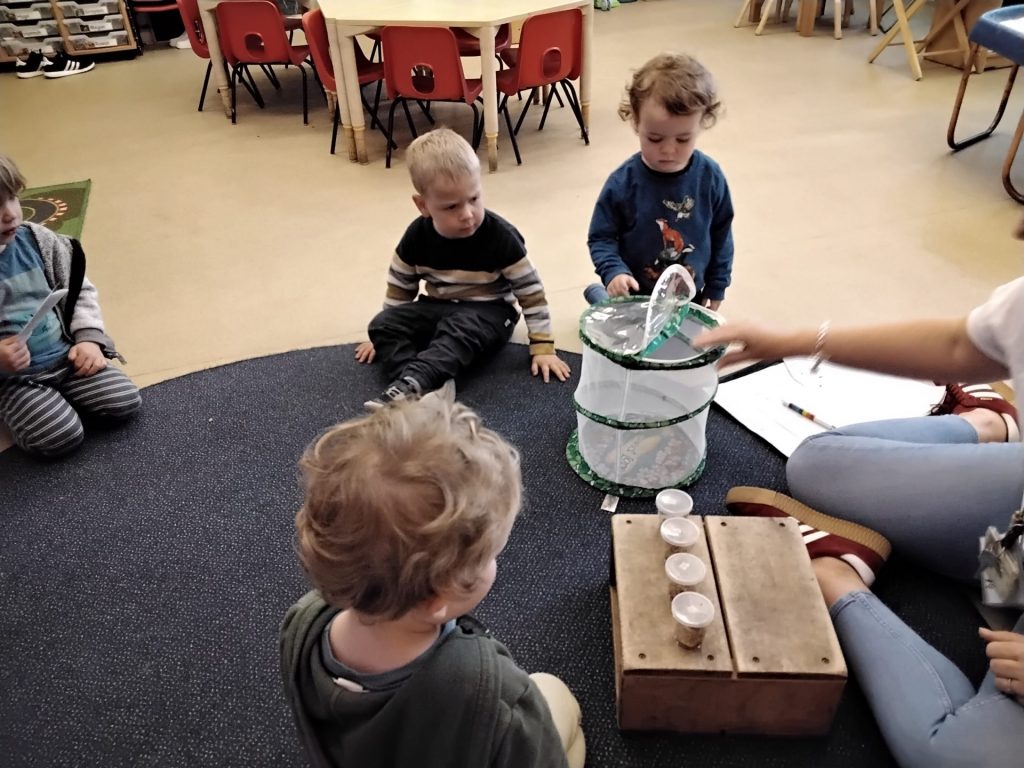
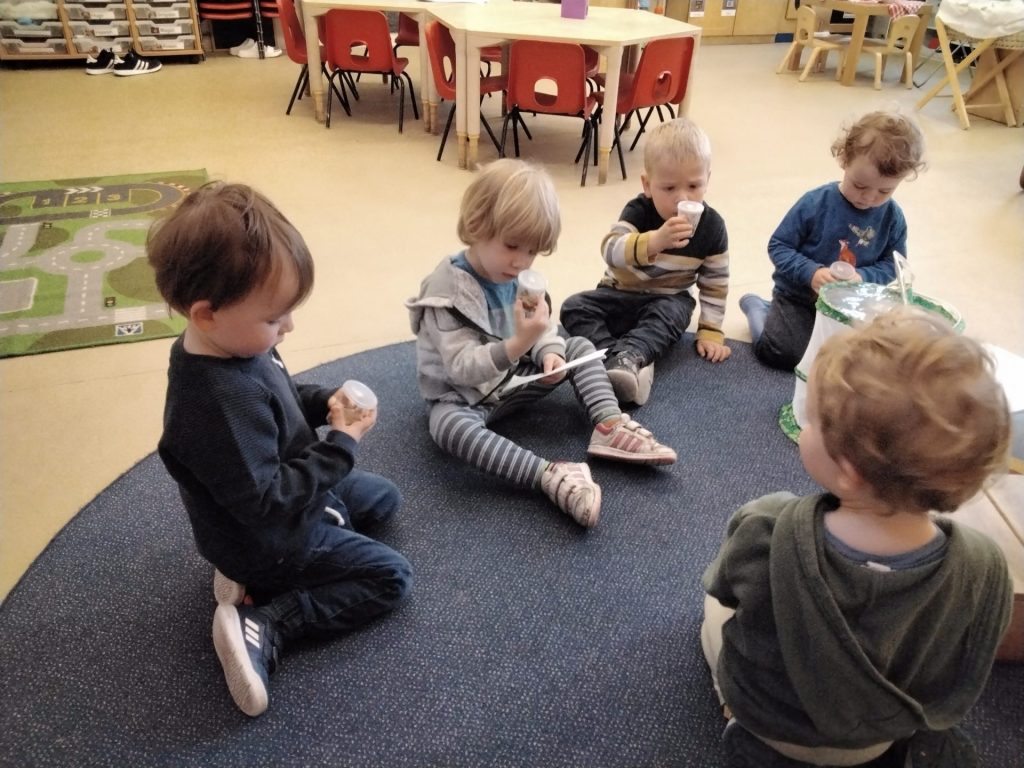
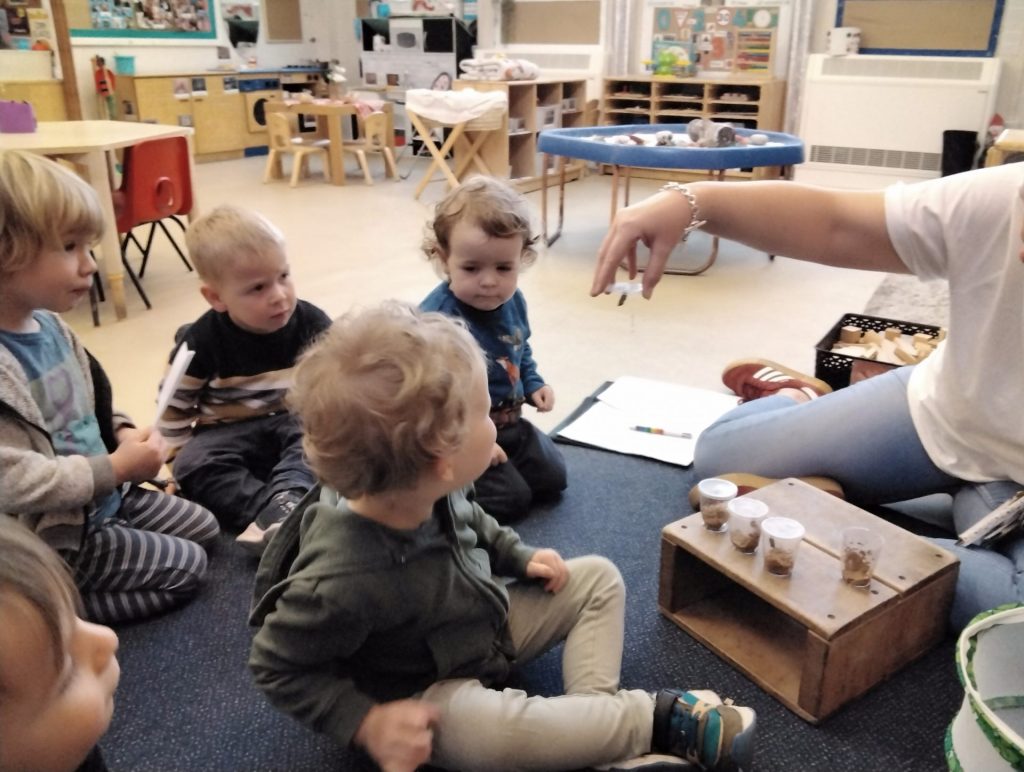
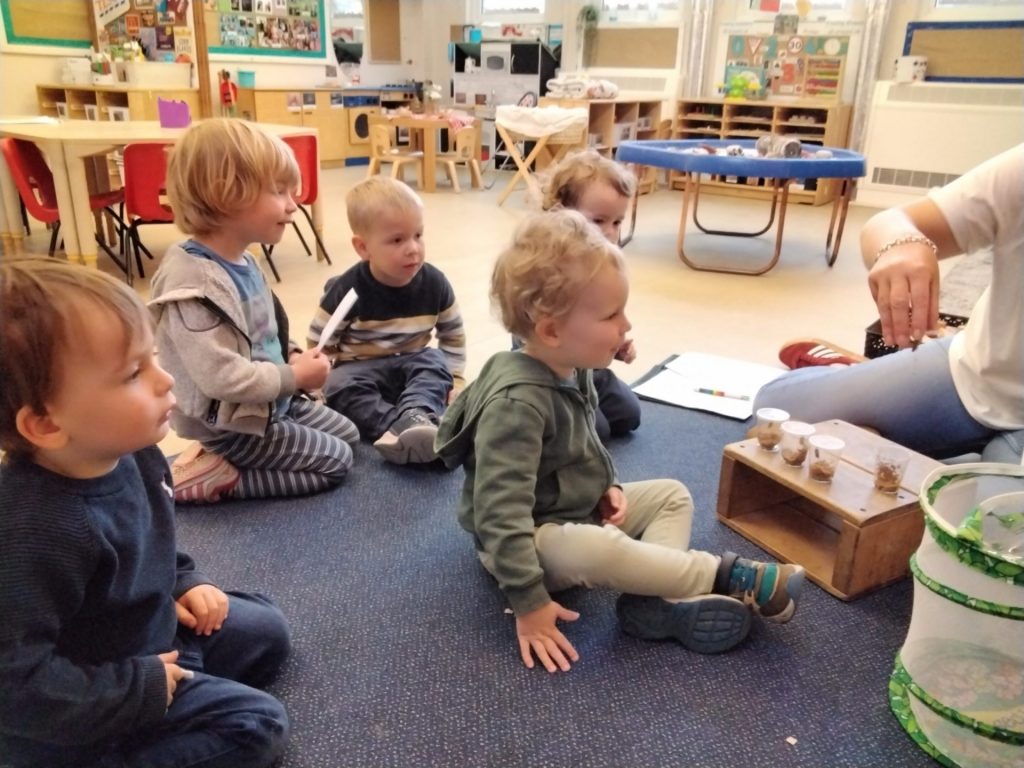
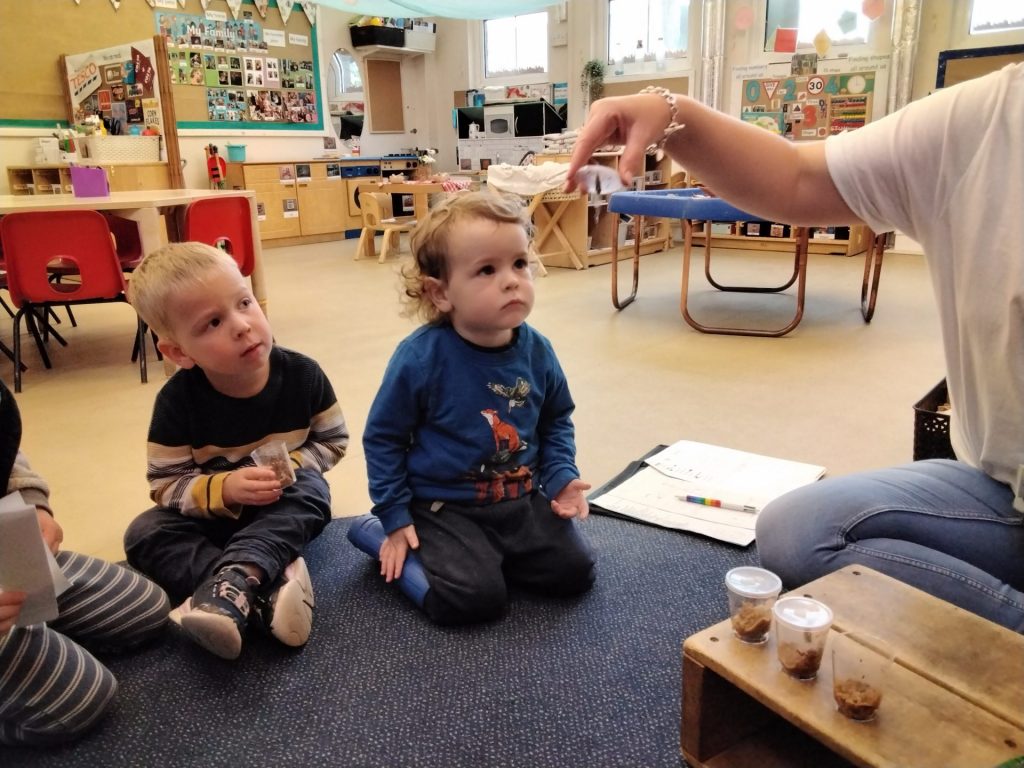
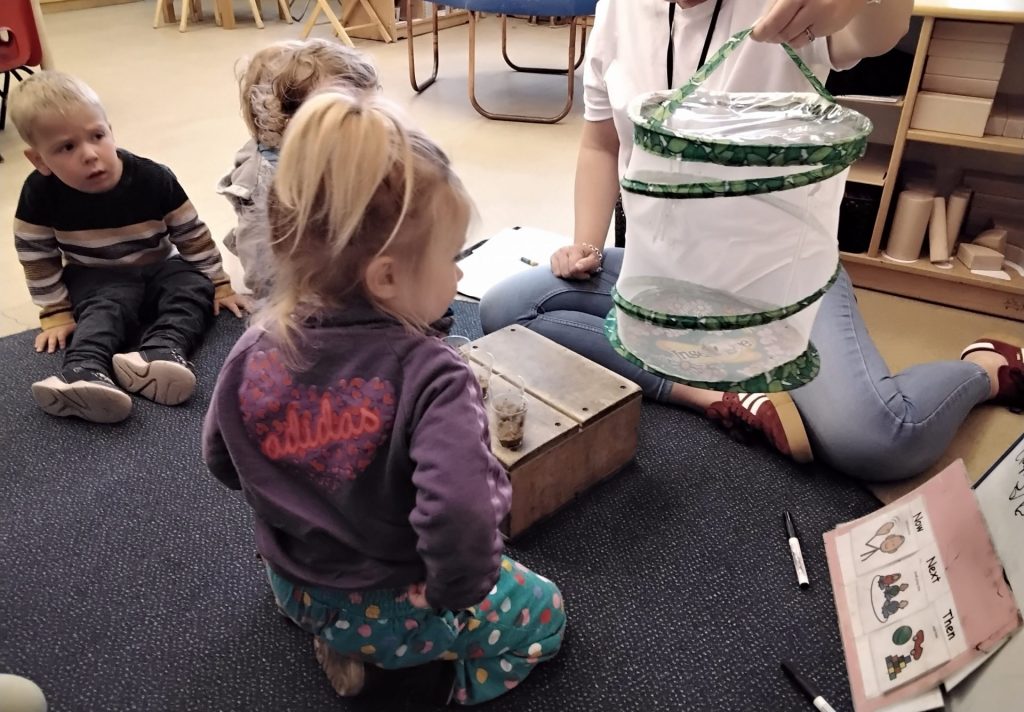
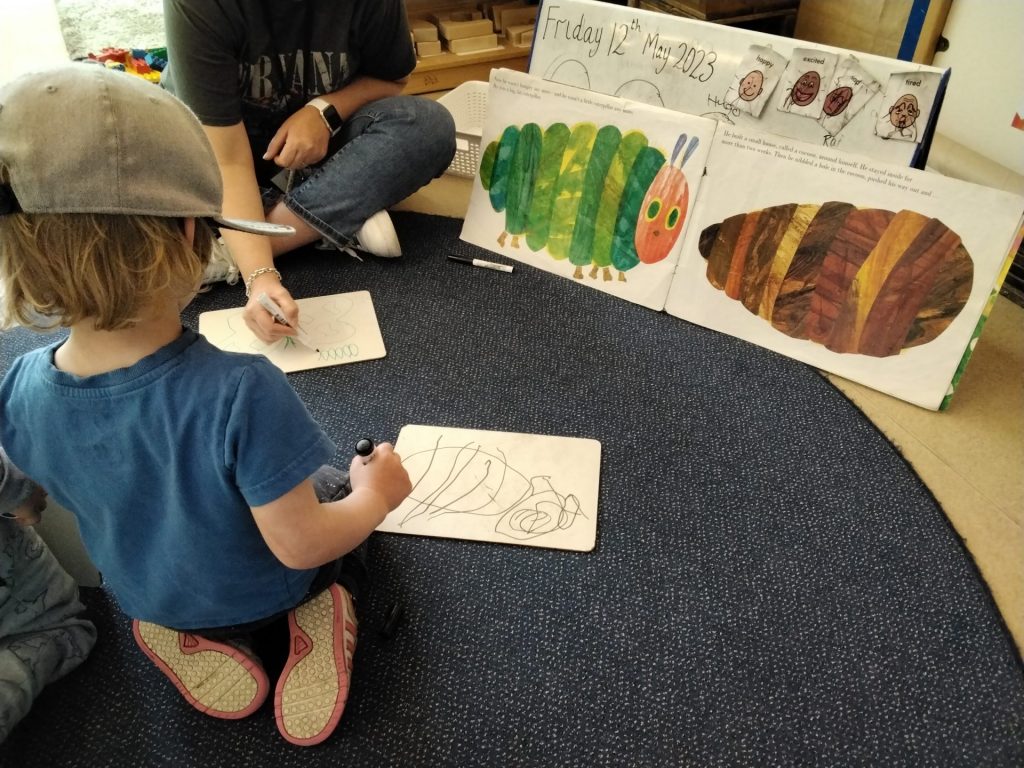
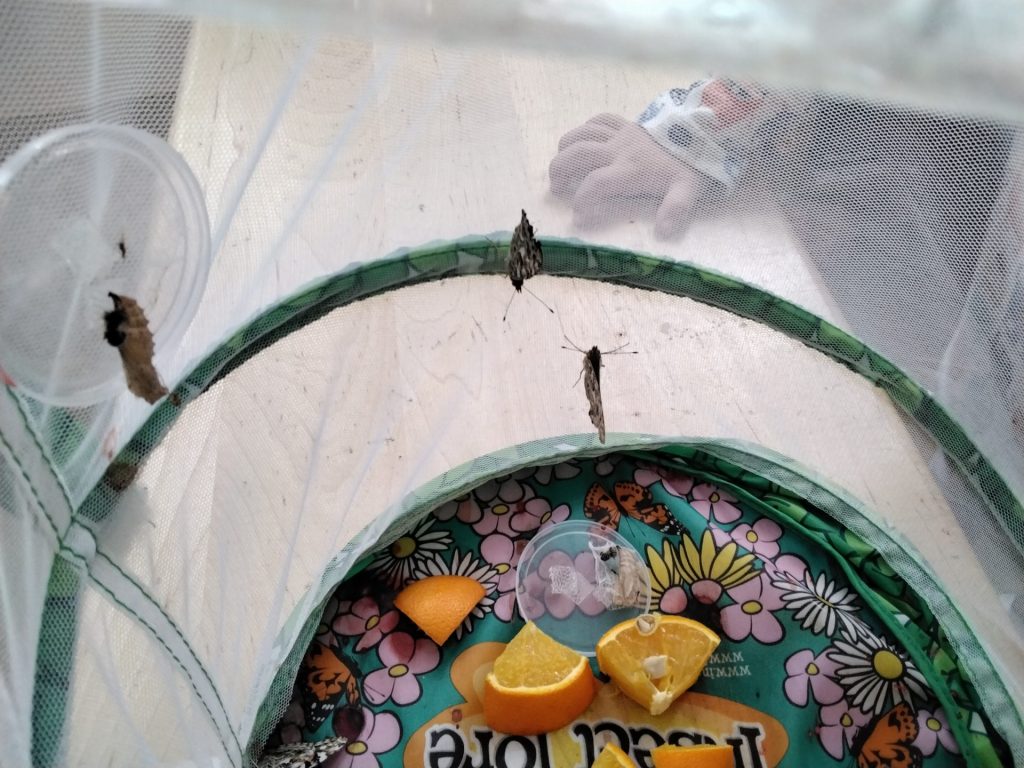
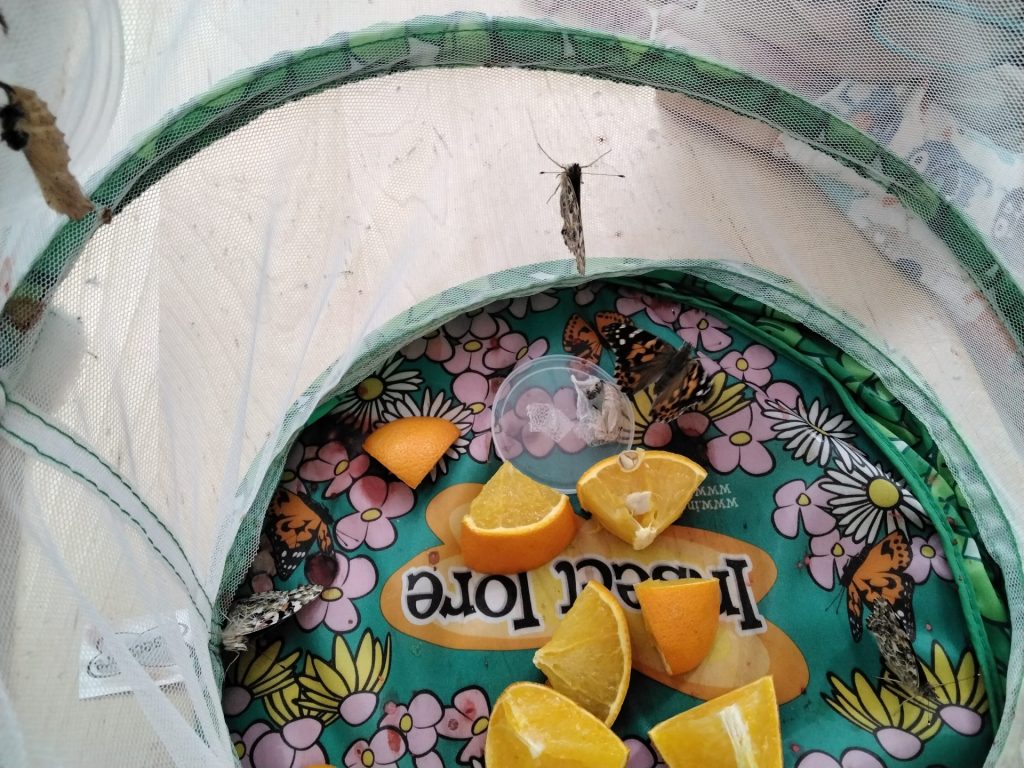
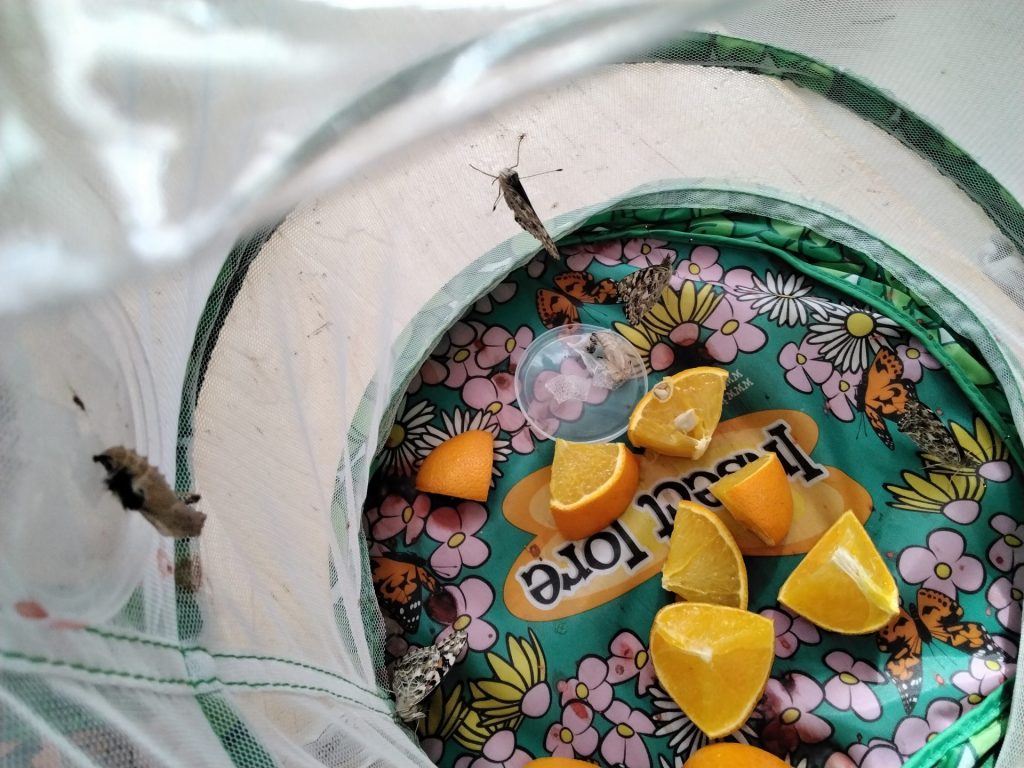
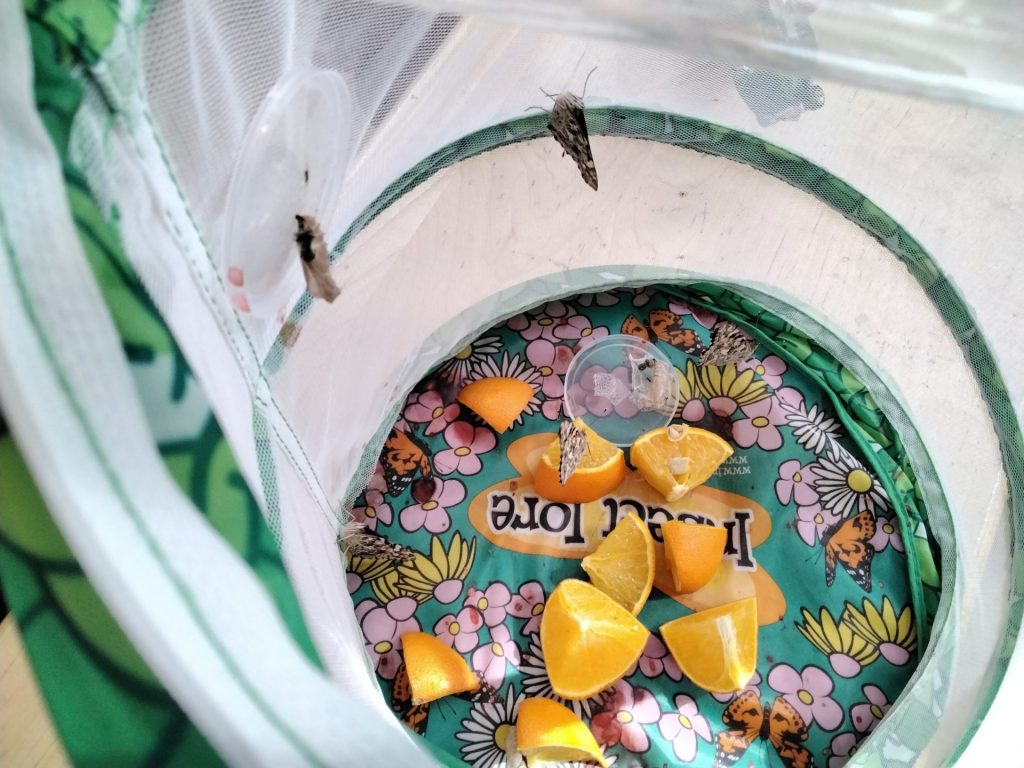
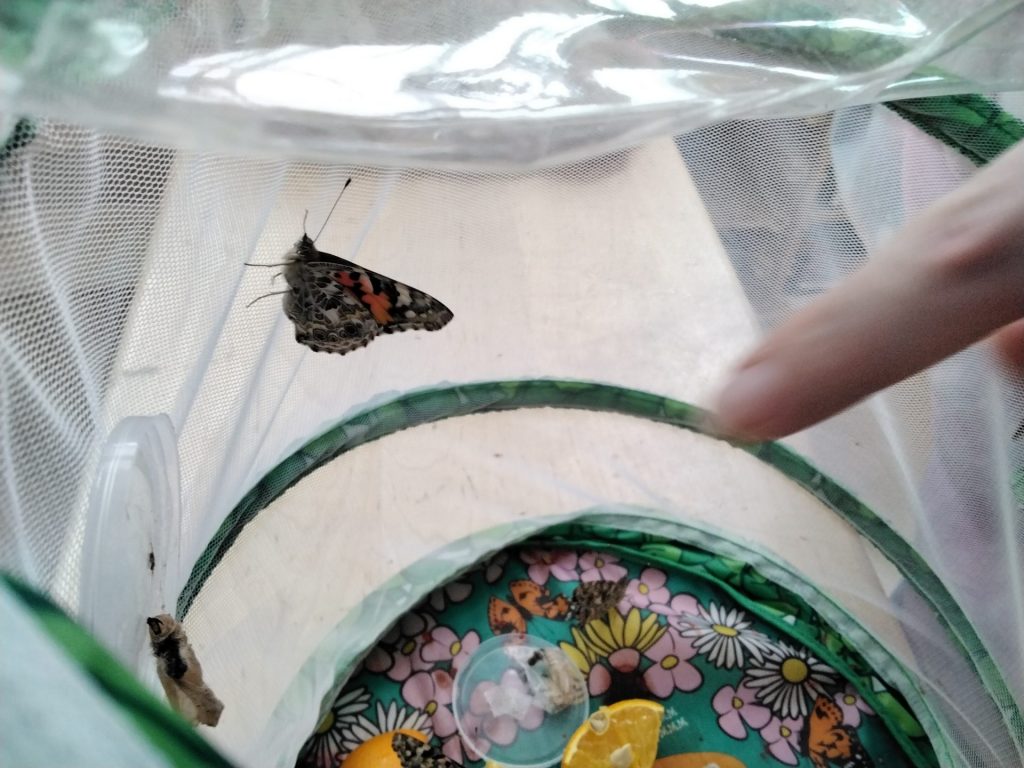
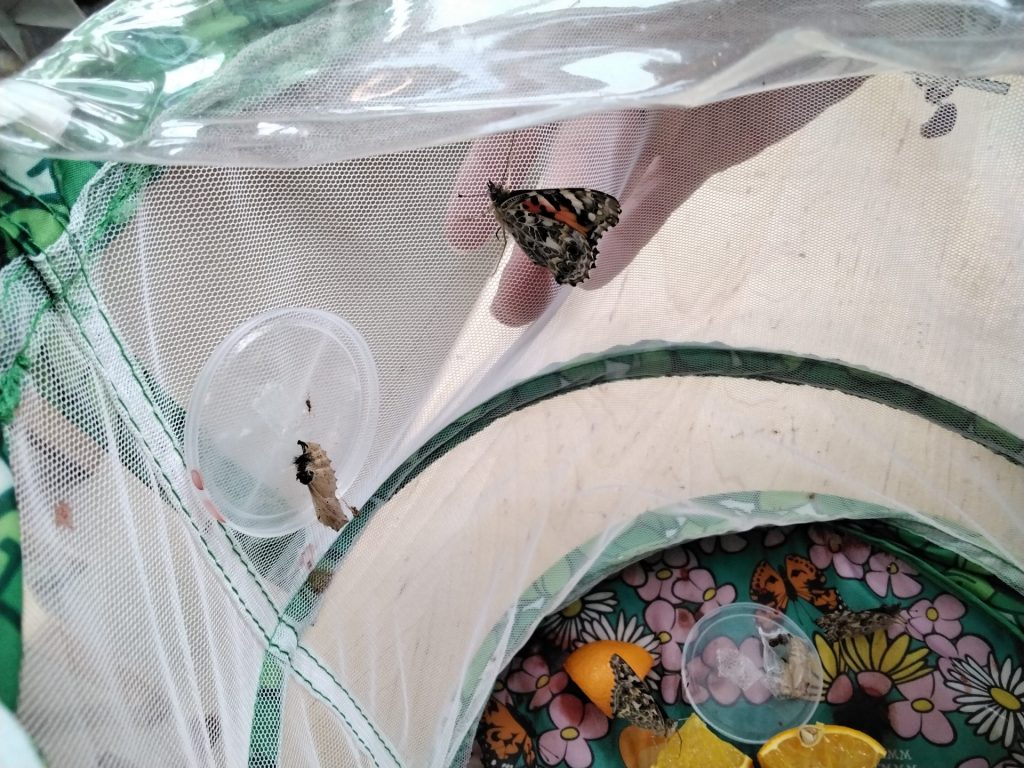
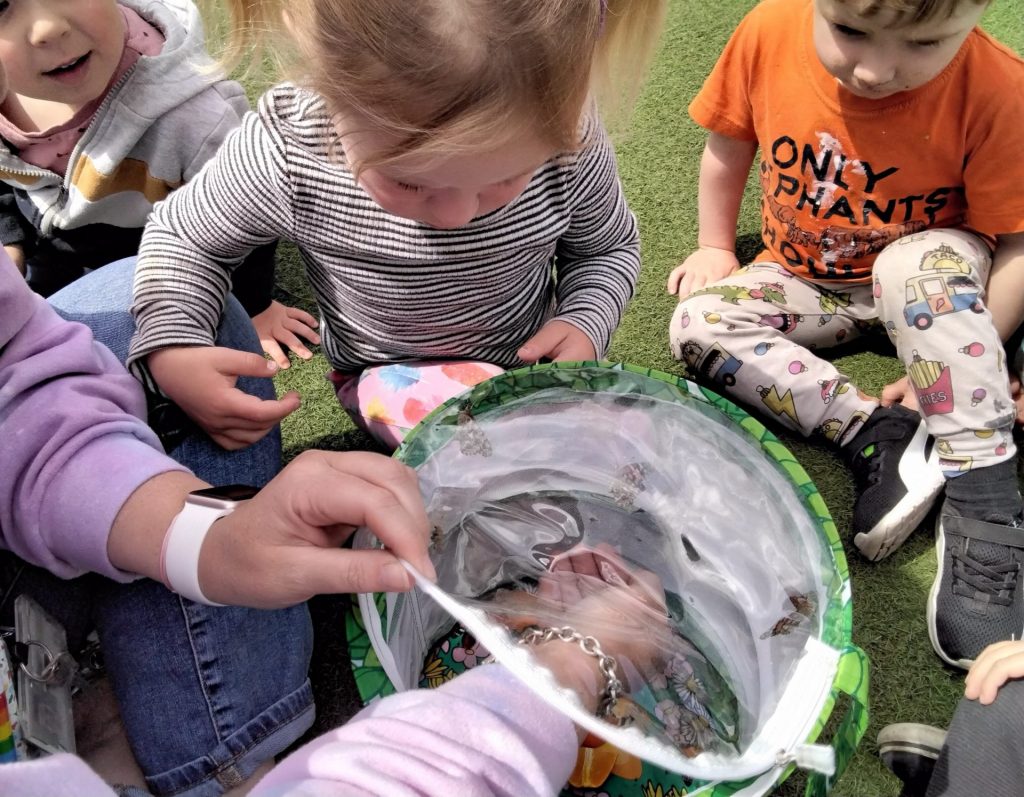
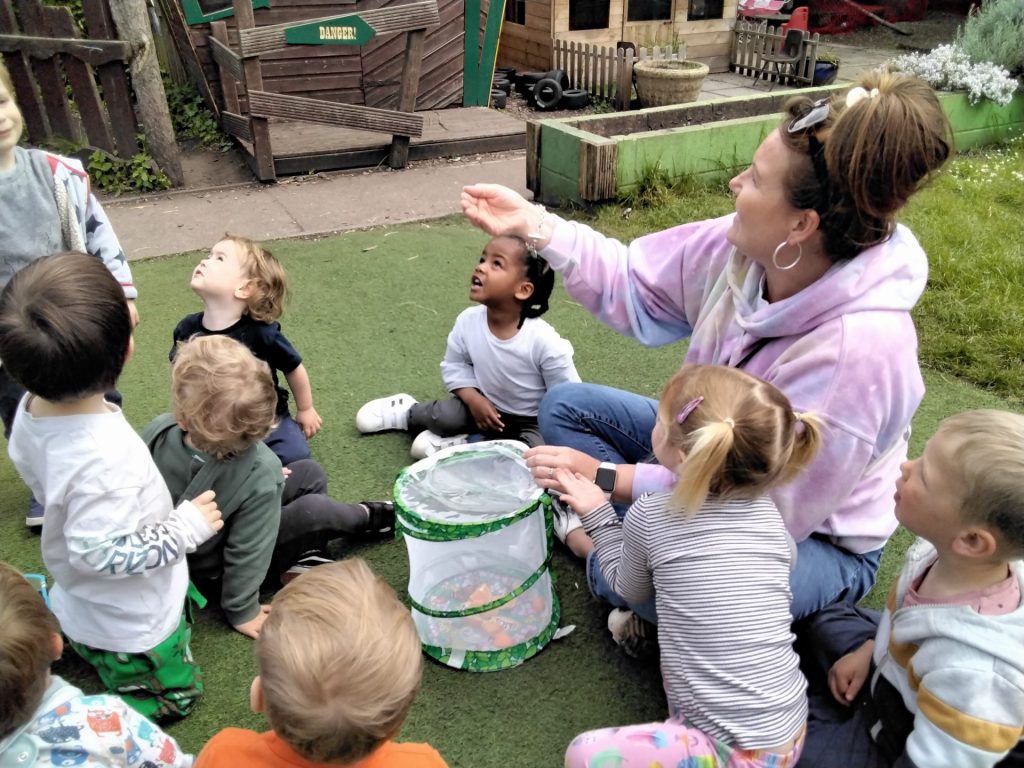
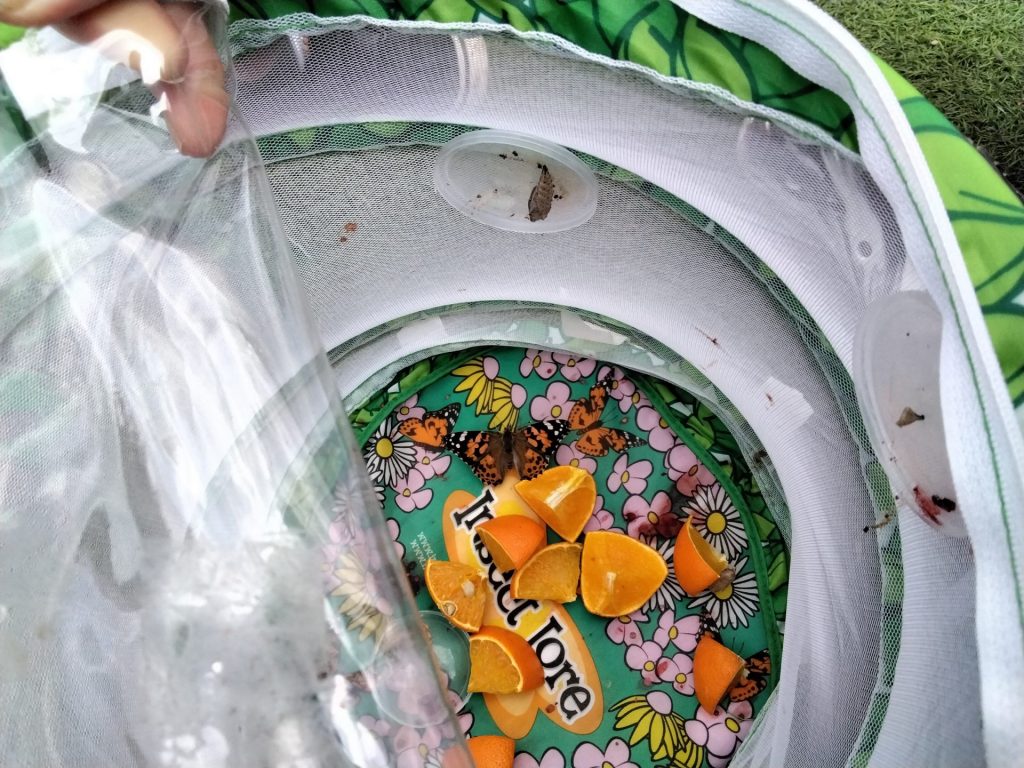
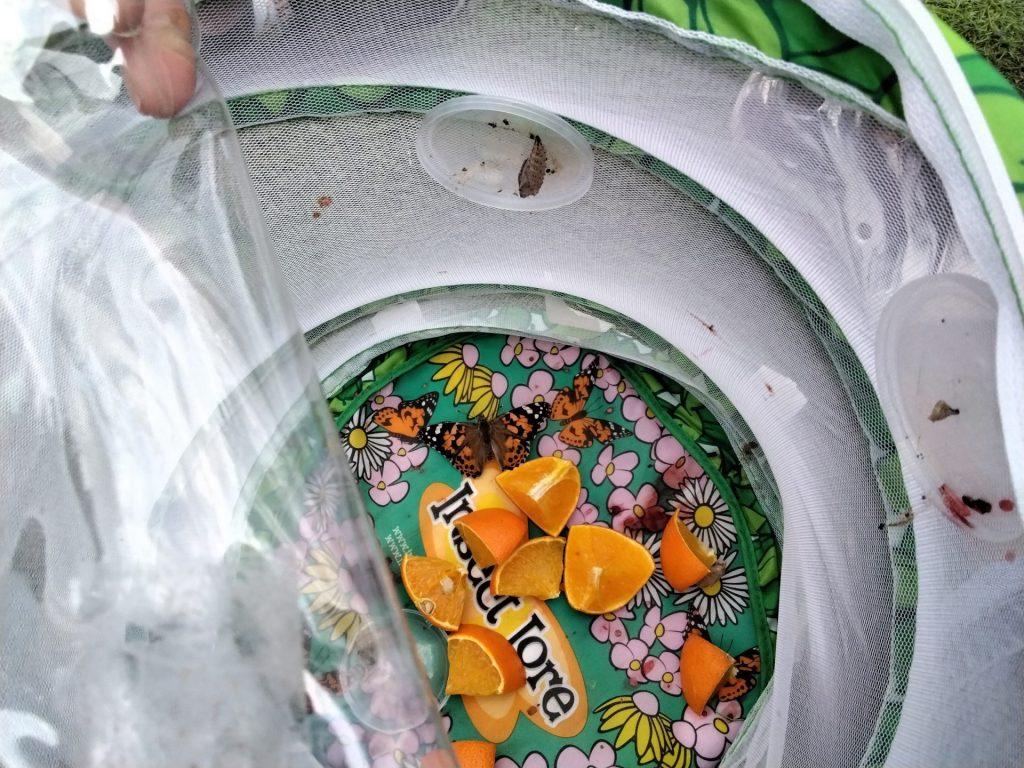
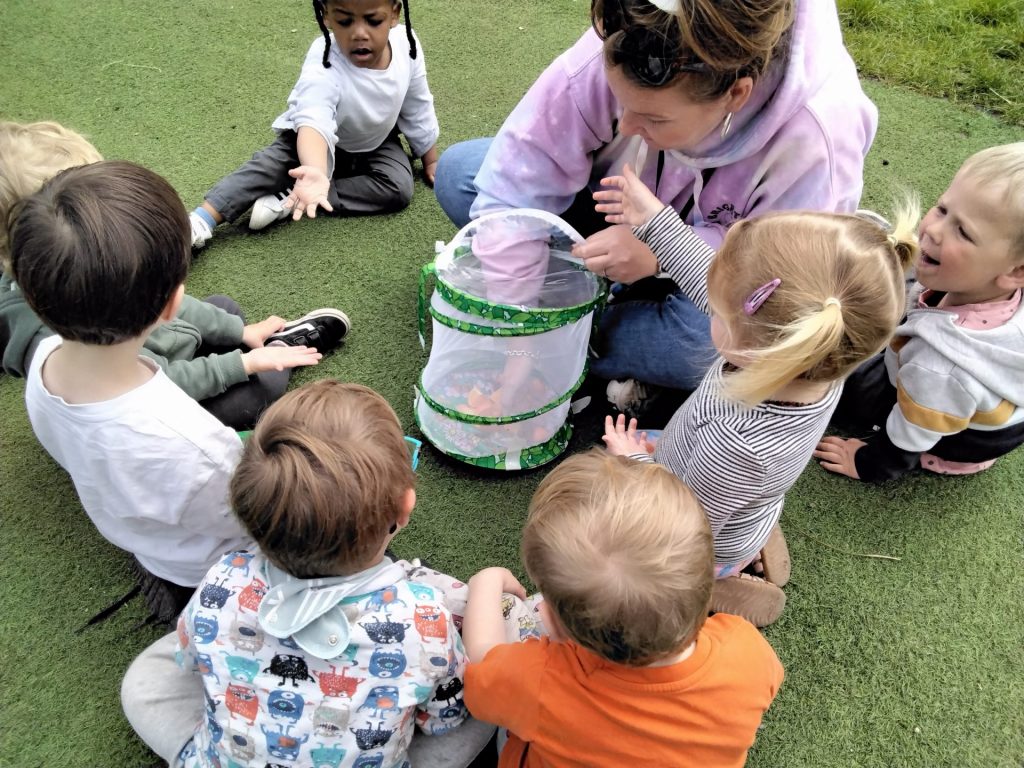
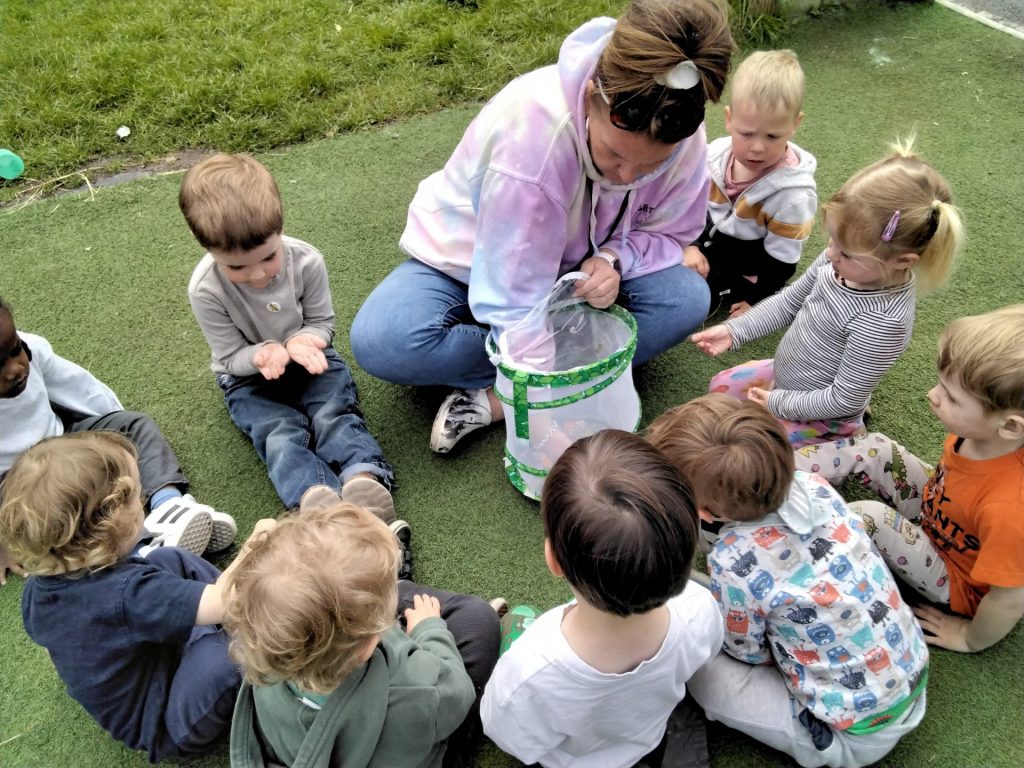
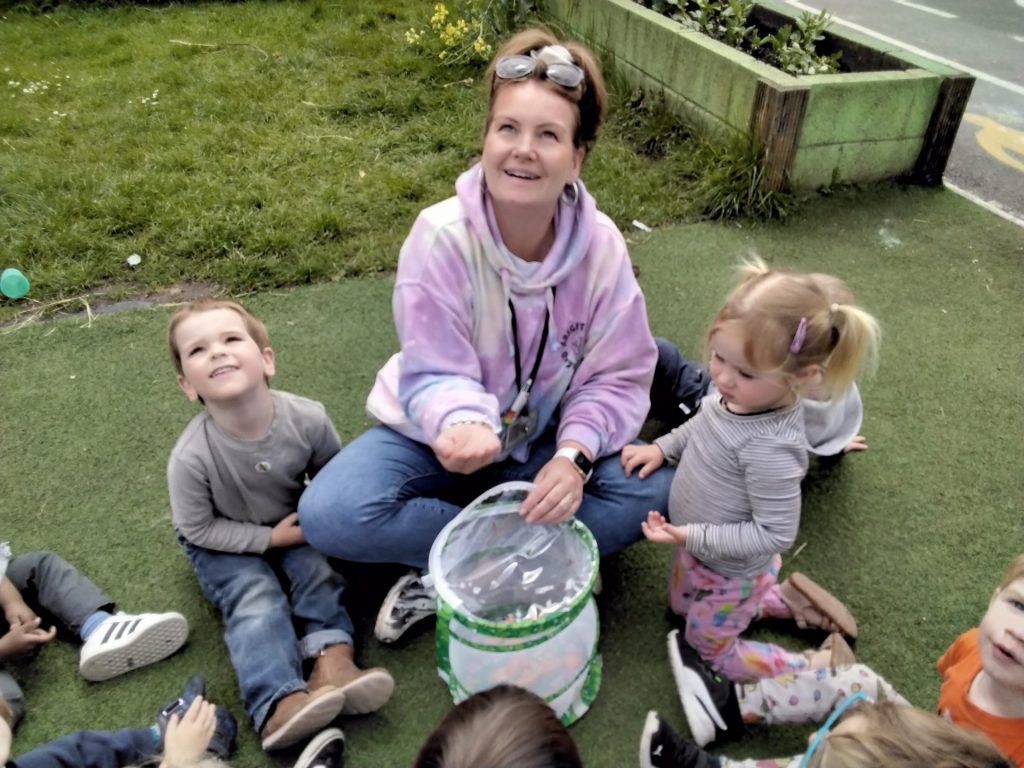
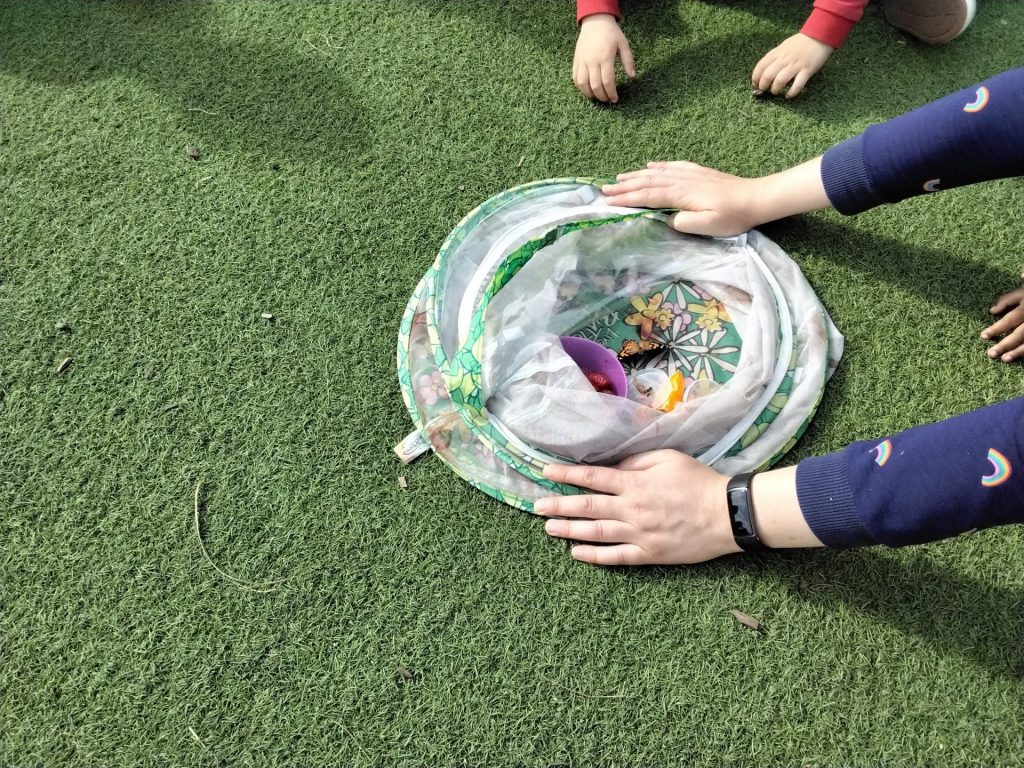
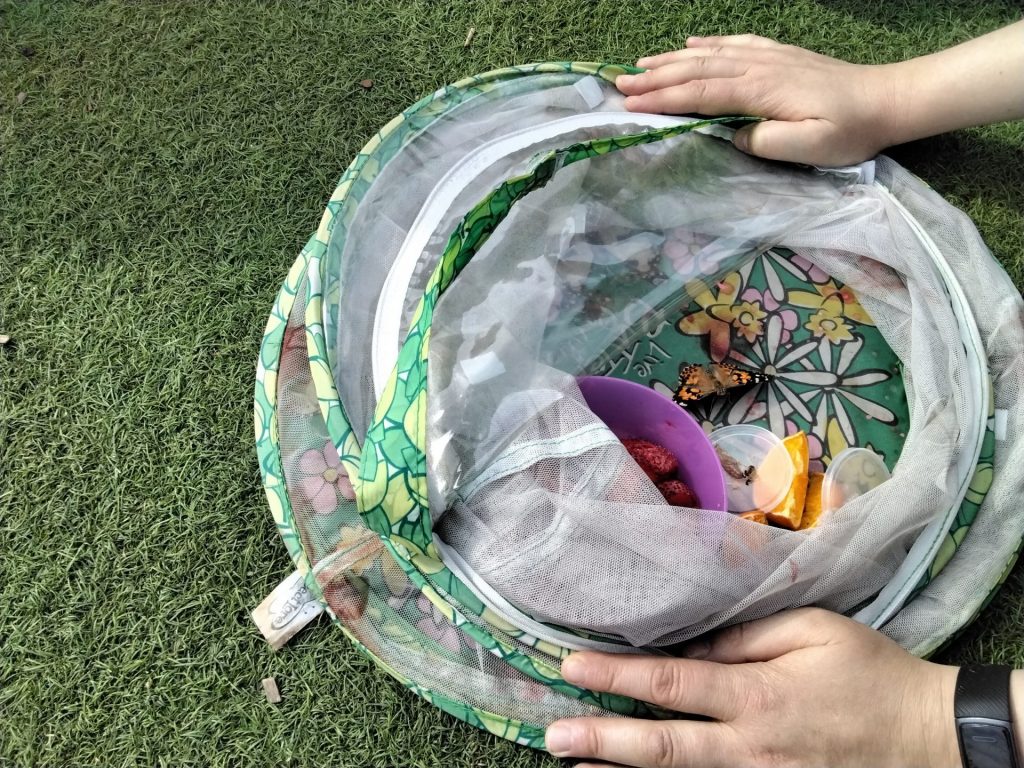
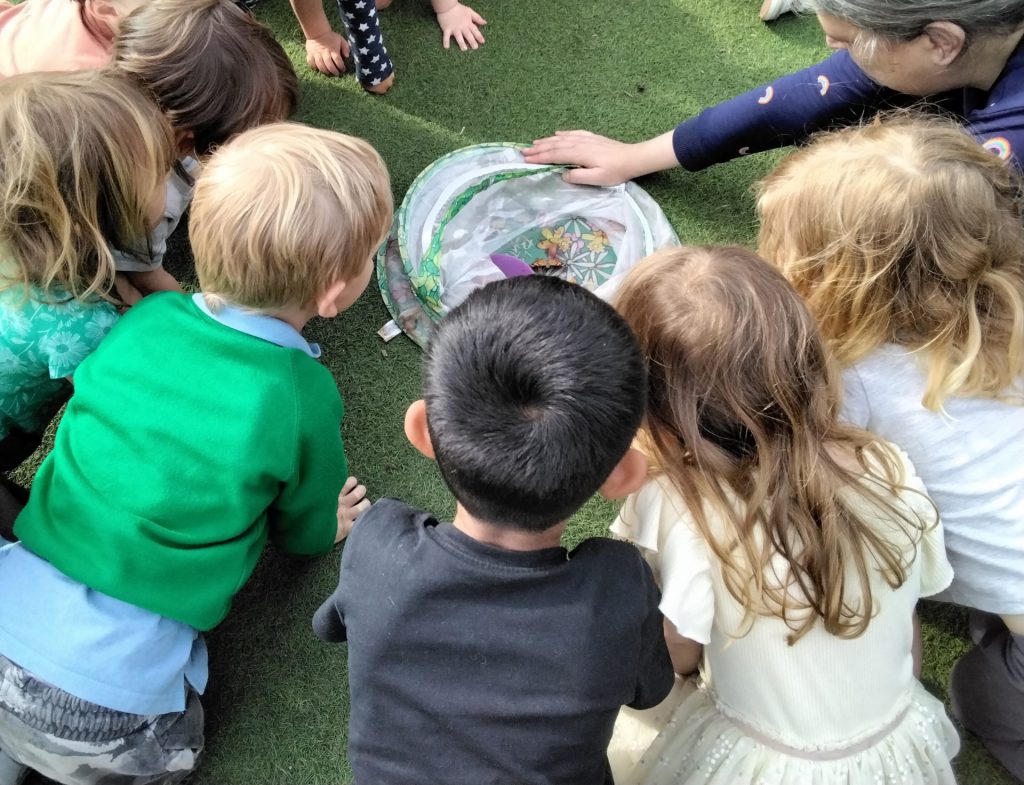
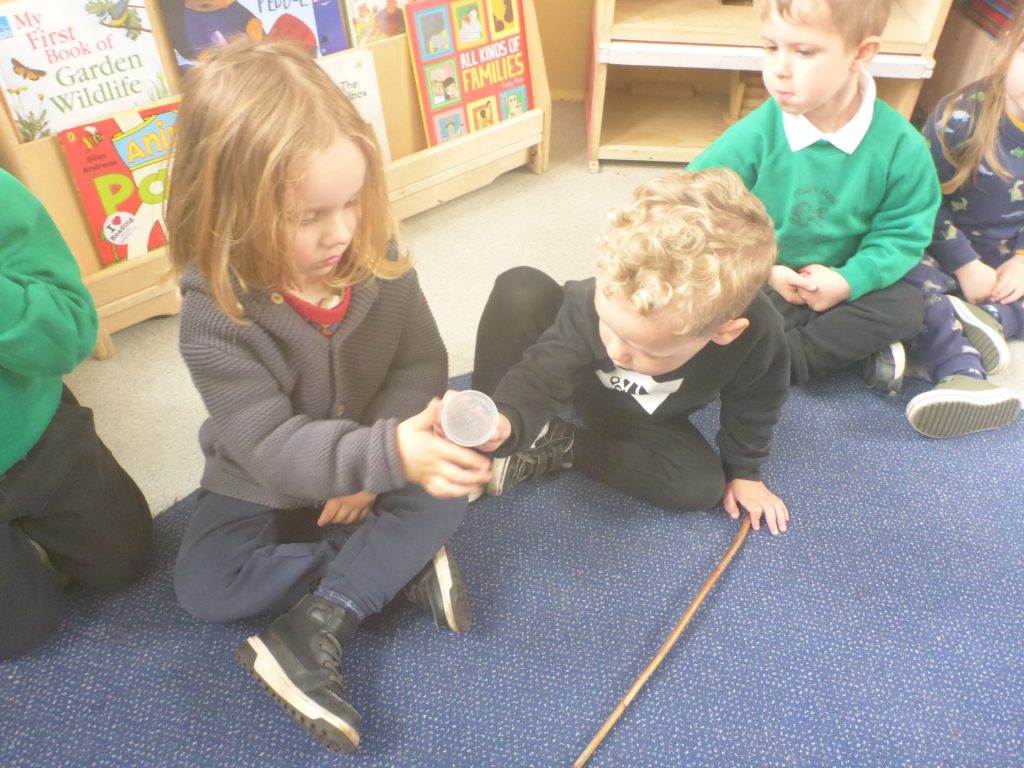
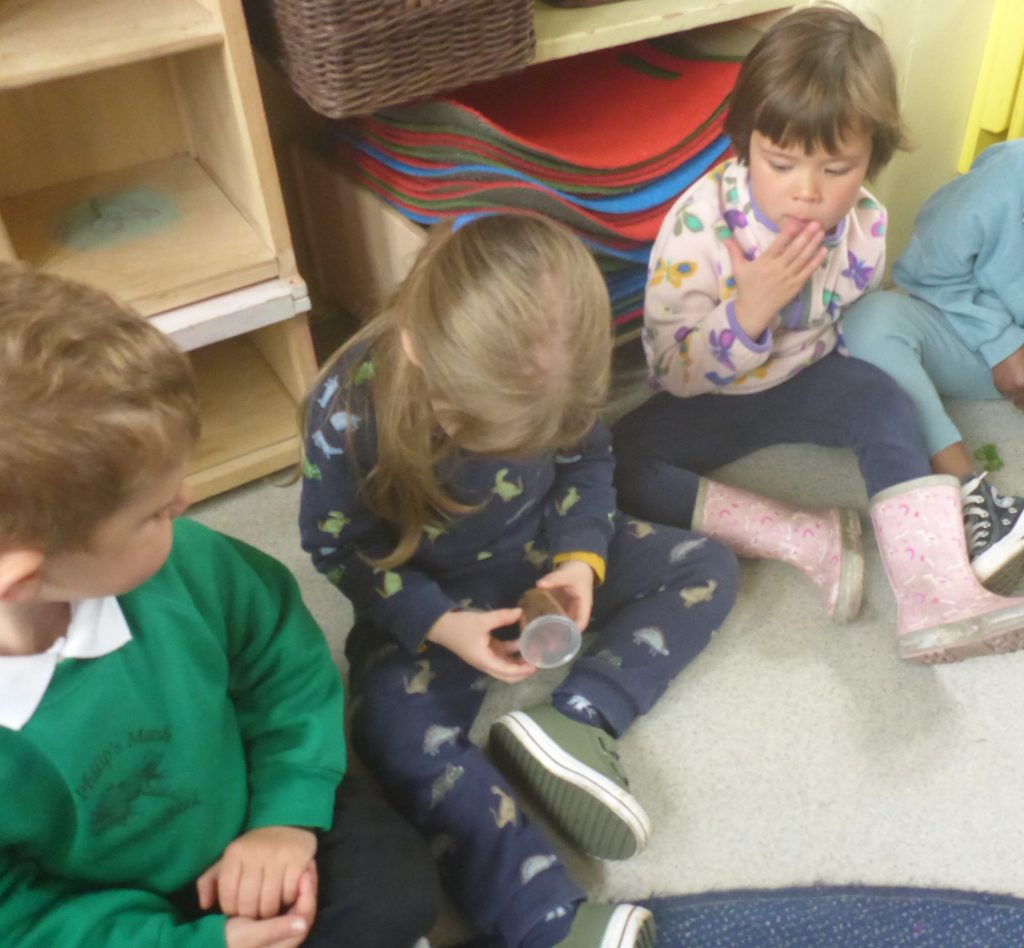
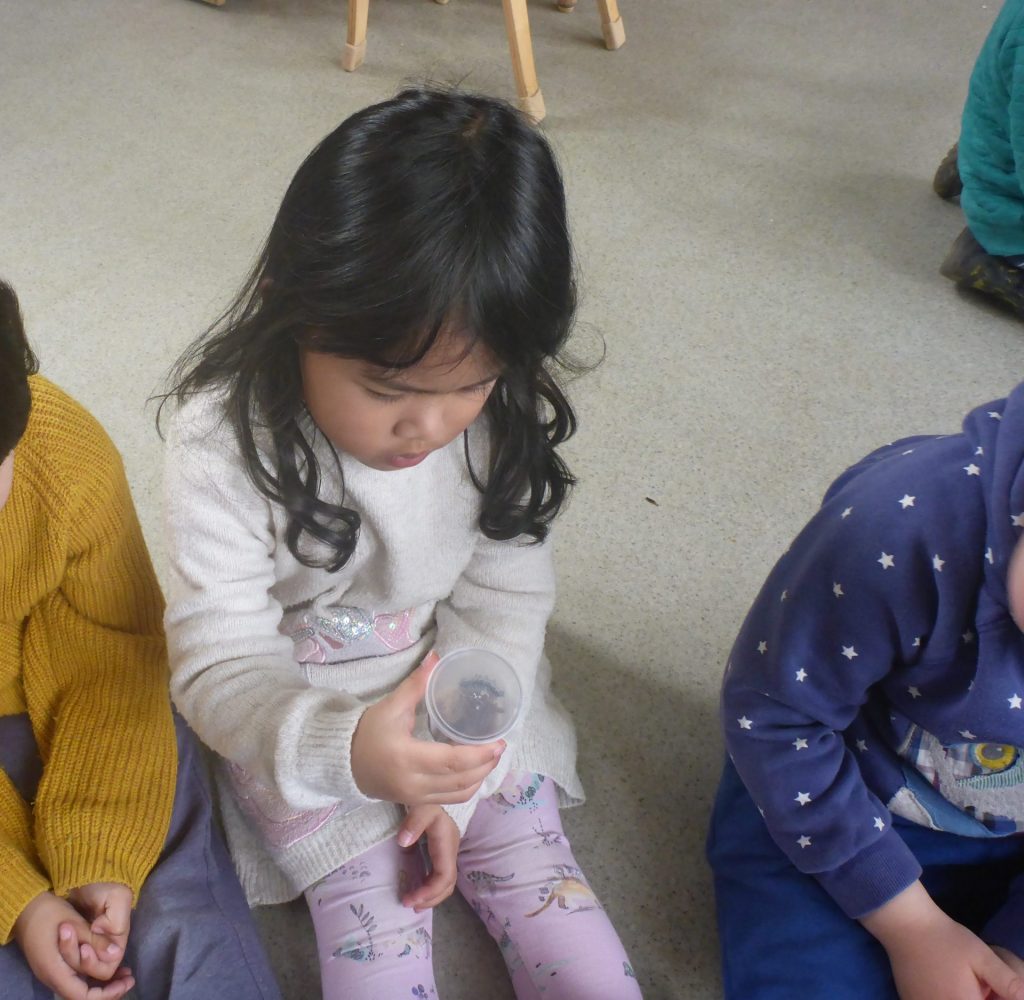
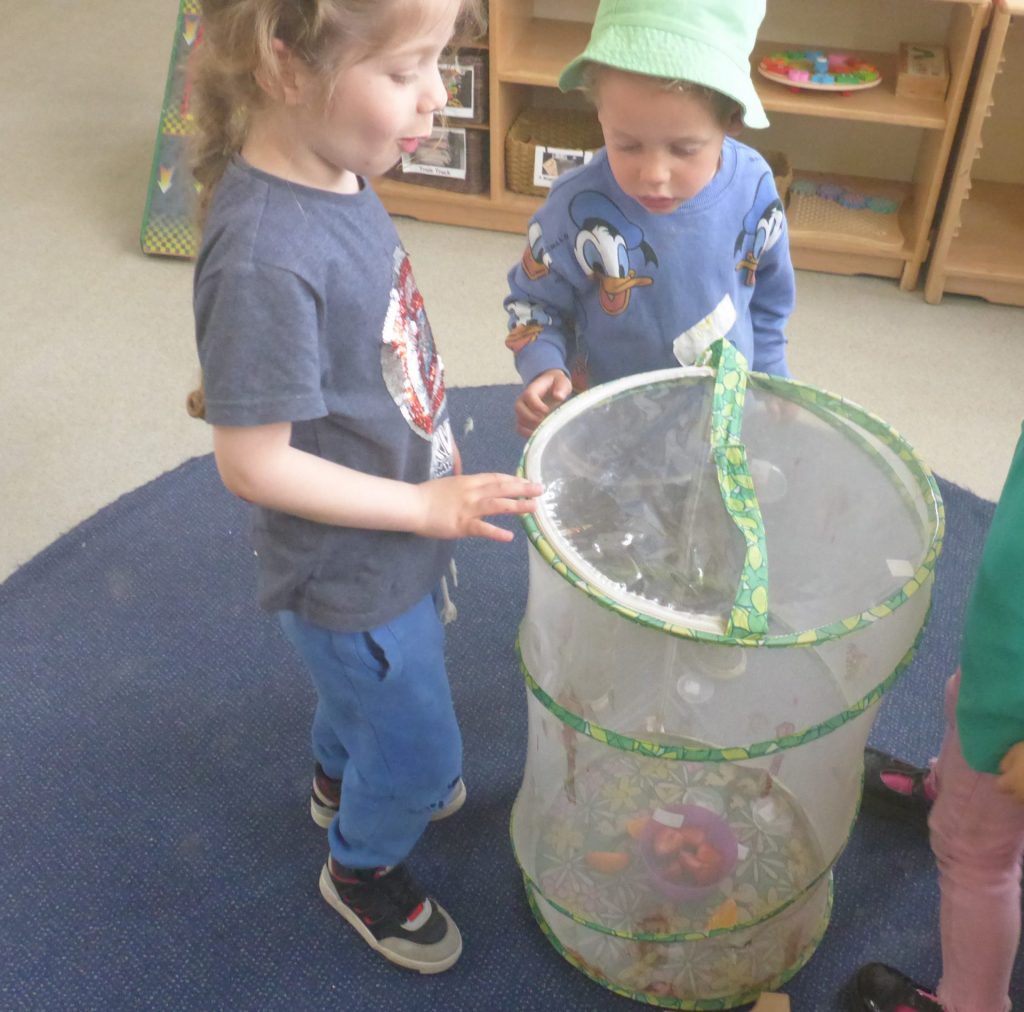
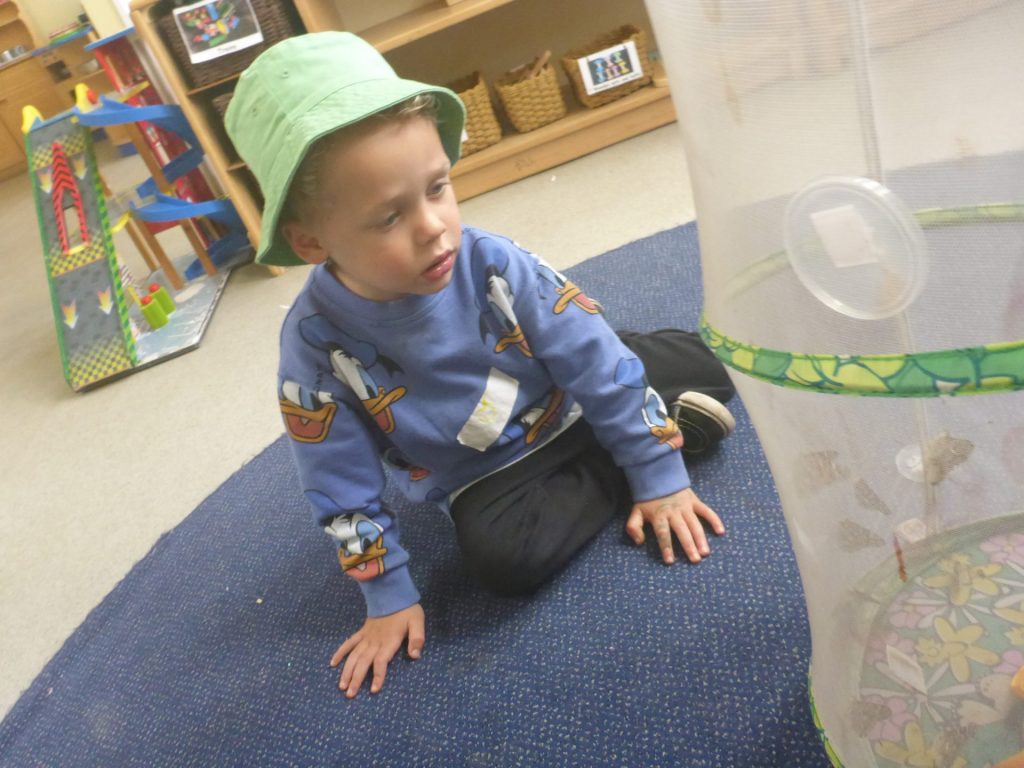
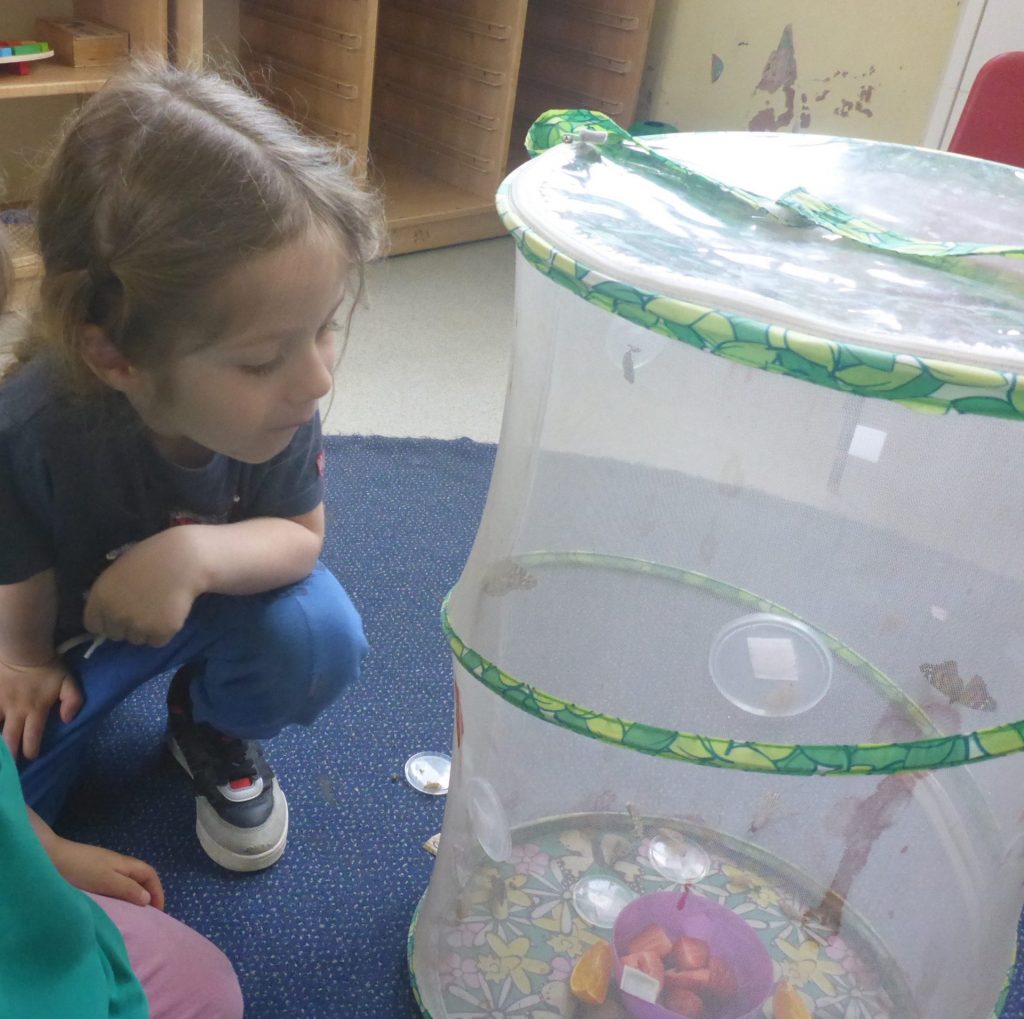
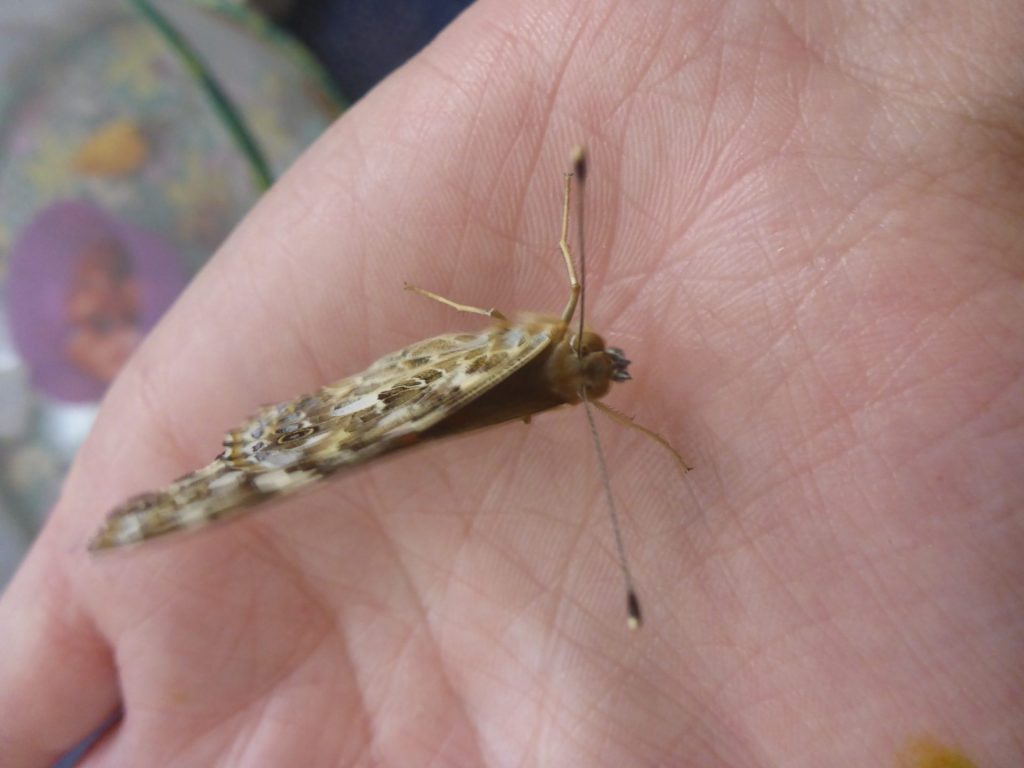
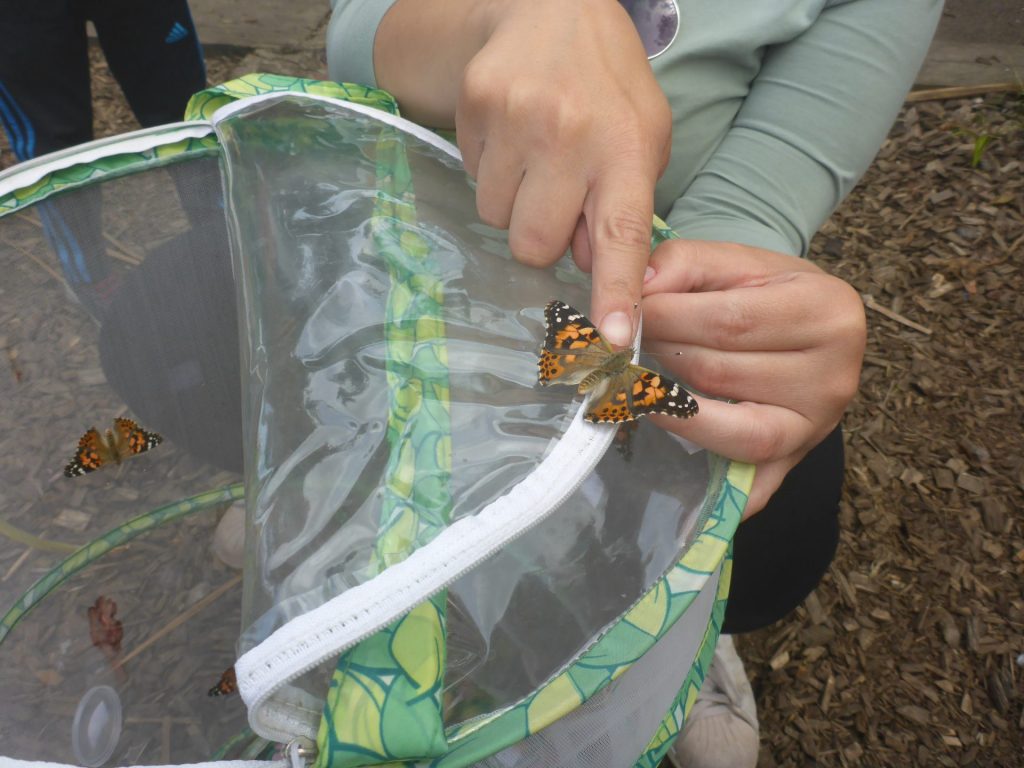
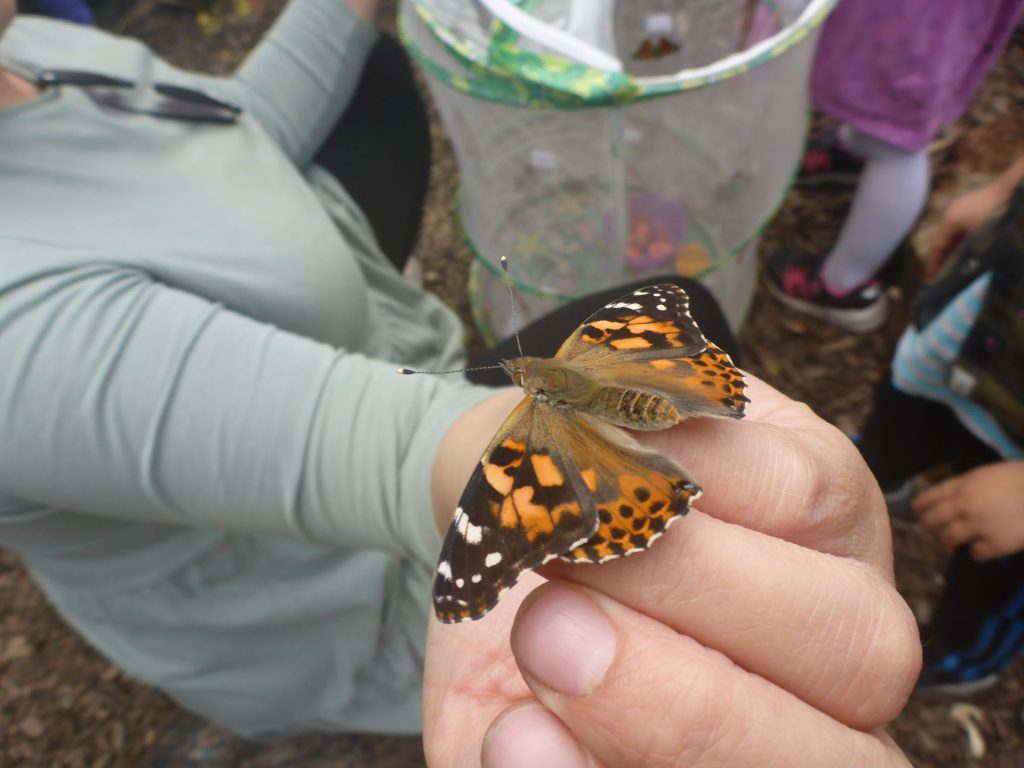
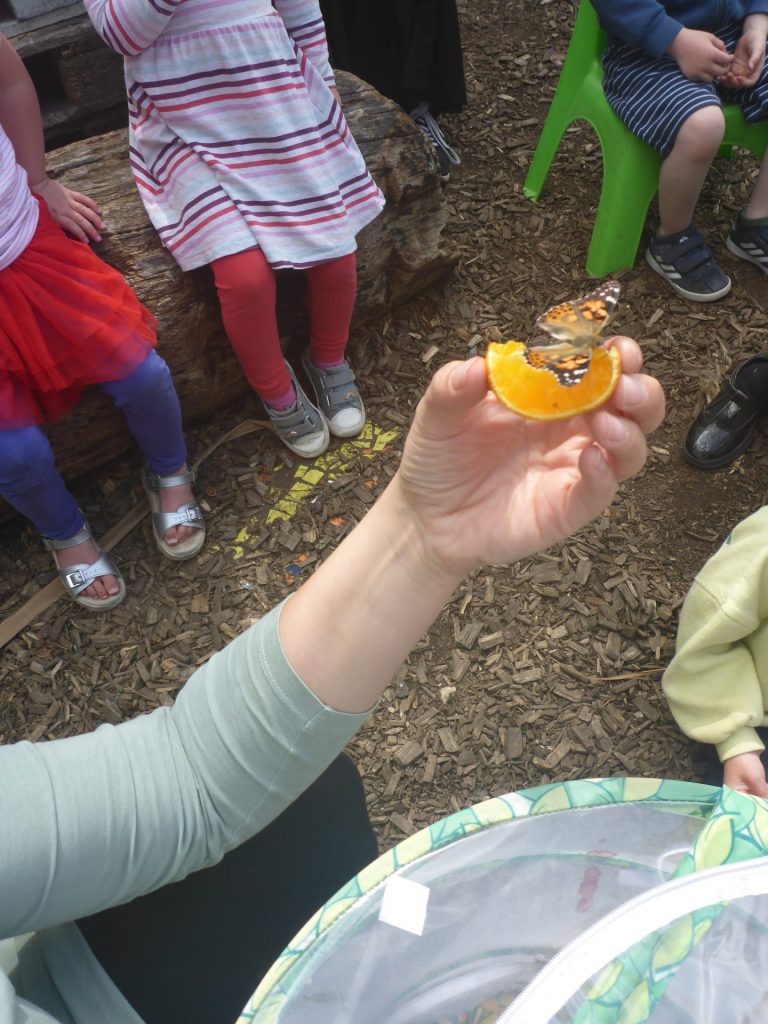
There was great interest a few weeks ago when a set of tiny caterpillars arrived at school. The children scooped a lump of nutritious caterpillar food into each vial and very, very carefully (using a soft brush) put one caterpillar into each vial. Whilst in their vials, the caterpillars were kept in a quiet, safe place away from direct sunlight and we observed them whilst they ate, spun silk and grew.
[Did you know? During this incredible period of growth, they shed their exoskeletons four times and grow more than 10 times their original size!]
When they finished growing, the caterpillars climbed to the top of the vial and hung from the lid. They shed their exoskeletons one last time (five times in total!) before they hardened into chrysalides (chrysalides are also known as pupae). Once the chrysalides had hardened, we gently moved them to the butterfly net and watched and waited.
[Did you know? For 7 to 14 days, the chrysalides may look like they are resting peacefully, but an amazing transformation is taking place inside! The caterpillar parts inside each chrysalis are liquefying and re-arranging to become the cells, tissues and organs of a beautiful butterfly.]
It took about seven to ten more days for them to complete the transformation to adult butterflies.
[Did you know? When a butterfly is ready to emerge, it takes in air through tiny spiracles (tiny holes) in the chrysalis. This added intake of air pressure helps the butterfly split the chrysalis open. The butterfly will climb out of the split chrysalis with soft, crumpled wings and then position itself, head upward, in a vertical position.]
Once the butterflies’ wings were fully expanded they were ready for food and flight! We fed the butterflies nectar (sugar-water), fruit (fresh cut oranges, apples and old bananas), and nectar-bearing flowers.
We released the butterflies two to four days after they have emerged from their chrysalides. We chose days which were dry, warm, sunny and not too windy to release them.
We have also been painting and drawing caterpillars and butterflies, reading The Very Hungry Caterpillar and singing “There’s a tiny caterpillar on a leaf”.
